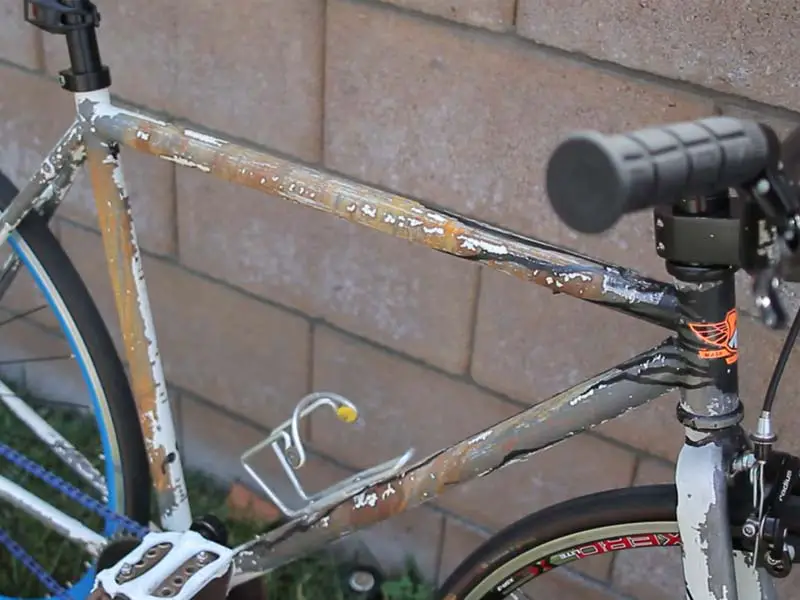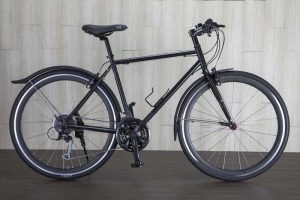Contents
What is a beater bike?

Also called a pub bike, beater bikes are a great safety measure and go-to bicycle once you head out in the streets of an unknown and potentially unsafe town or city. Because most people own a main bike that’s typically pricey and have sentimental value, beater bikes became popular.
See also:
If you’ve heard tons of stories of bicycle theft in the area where you use your bike, a beater bike will help you get to your destination without worrying about losing an expensive and well-loved buddy.
Why use a beater bike?
So, with all their popularity and buzz, why get a beater bike for yourself? If you haven’t got one yet, here are top reasons why you should:
- Beater bikes are inexpensive. Compared to quality bikes and your prized unit, a cheap bicycle won’t be the target of theft and won’t break your bank. If you are eyeing an entry-level bike that won’t take a huge chunk out of your credit card bill, beater bikes are the way to go.
Many shops around the world sell beater bikes and you don’t have to have the financial stability to own one. And even if you do, beater bikes are simply less pricey and are more practical to buy than an expensive or branded model.
- They are suitable for various weather conditions. To avoid drivetrain damage, as well as the dangers of saltwater, beater bikes are often used by people who want to cross towns and cities to get to their destination. No one wants their expensive bicycle to sustain such damages, and that’s why they use their rugged bike to go across these wet and dangerous terrains.
In a place where you wouldn’t want your expensive bike to have its drivetrain get worn out, you’ll need a bicycle that will do just fine in bad weather – that’s where the beater bike comes in handy.
- You can learn how to fix a bike by yourself. Do you want to become more familiarized with your bike parts yet you’re afraid to take them apart because you’re afraid of accidentally ruining them? Go with a beater bike, which has cheap parts that you can buy from anywhere.
If your beater bike gets worn out parts, you can replace it inexpensively versus a branded bicycle that you have to take to a bigger shop with special parts. On average, replacement parts are about $3 for a beater bicycle.
First-time bike owners are recommended to have a beater bike if they want to learn how to fix a bike by themselves. In this way, if you move to a mountain, city, or BMX bike, you’ll know to repair, customize, and perform other modifications on your bicycle with ease.
Moreover, the braking system of a beater bike uses rim brakes so it’s not that expensive to replace. On the other hand, mountain bikes, which are typically more expensive, uses hydraulics which also requires knowledge and tools. You not only have fewer expenses with a beater bike in terms of repair but you also don’t have to worry about extensive bike fixing knowledge.
- Beater bikes can be parked anywhere without worry. Let’s say you have to move to a city or town with a lack of security when it comes to parking bikes. It doesn’t have security guards in the parking area and it doesn’t even have a bike lane. What are you going to do?
Fortunately, beater bikes are made for such dangerous situations. Even if it gets stolen, it’s less worrying because it’s not too expensive versus your main bike that would cost hundreds of dollars or so. If you want to save your precious bicycle and don’t want to risk it in a theft-prone area, go for a beater bike instead of with that instance.
Moreover, thieves don’t usually steal beater bikes because they cost less (unless in very difficult situations or poorer communities where bicycles are considered a luxury).
How much should a beater bike cost?
Beat bikes usually should cost only around $75 to $100 depending on the build. You can also hijack some old parts from your older bikes but make sure the important parts are still of quality. It should look bad but should function just fine with safety and comfort.
Where to buy a beater bike
To get a beater bike, you can buy any of the cheapest bikes in stores that don’t cost much. Go around garage sales as second-hand bikes are typically less pricey but are still of good quality.
You can also look at stores where they sell bikes at a markdown price. After that, it’s just a matter of tweaking your bike so it still has quality functional parts even with a dirty-looking appearance.
Things to look for before buying

If you live in NYC, most people will tell you that it’s one of the most ideal places to use beater bikes due to the road conditions. So, how do you choose a beater bike? Here are the three characteristics you should look for:
- A good beater bike should be cheap. You don’t want a beater bike that you’d regret purchasing after it has been stolen randomly around town or in the city. The most important key factor on a beater bike is to be cost-effective.
When it comes to building, beater bike frames cost only around $75. Typically, the bottom bracket and cranks sell around $100 on sale. You may get different prices depending on availability in your area but these are just examples.
The other components (handlebars, stem, seat, seatposts, and wheels) can be taken from other old bikes that you have. It’s all a matter of looking for junk and turning it into treasure, so long as you keep the important bike parts, such as the chains and the mechanical areas.
If you want a quality beater bike for quick trips without the fear of losing your investment, don’t spend too much money in building your bicycle – that’s what makes a great beater bike.
- It should be rugged and durable. A good beater bike handles all conditions even if it’s not too expensive. You have to make sure that your bicycle is built to be sturdy in snow conditions, especially if you live in an area that has salt on the ground. A sturdy beater bike is also needed when crossing on loose gravel.
At any rate, if your bike will be prone to dirt and corrosion then it should be durable. Although the frame and the handle might look scuffed and old (which is also a way to make it theft-deterrent), the moving parts should work well against bad weather.
With that said, NYC has a lot of potholes so if you have to stay there for quite a while, you’ll want to find a beater bike that should be ideal for bridges as well.
- A good beater bike should not draw attention. Find a beater bike that doesn’t call too much and keep it flat, common, and blending among the surroundings. The general rule is that it shouldn’t draw attention, especially to thieves, but it should also be easy to identify for you (such as specific markings).
For beater bikes, the black color is good since it doesn’t draw a lot of attention. You can also customize your bicycle to make it cheap and dirty-looking, as it will minimize your chances of having your bike stolen.
How to build a beater bike yourself
Make your bike look undesirable so it won’t catch the attention of thieves – here’s how to build your beater bike.
- Buy a cheap bike, which will be the basis for your beater bike. It should be made of steel material. Usually, you can get a single-speed bike for around $40. However, tires are important to be durable so that you can easily avoid punctures.
The reason why steel is preferred for beater bikes is that steel bikes get rusty and this makes them less susceptible and desirable to thieves.
- Prepare the tools you’ll need:
-
- paint stripper in an aerosol can
- safety gloves
- screwdriver or anything else to remove the paint
- beer to make the corrosion process quicker
- carton
- paintbrush
- Lay down a carton to place your bike so it won’t stain the ground. Take the wheels off and lay your bike flat for easy and even spraying.
- Spray the paint stripper all over the bicycle frame where there’s paint.

- Wait for 15 to 20 minutes for the paint to pull off the frame automatically.
- Scrape off the paint using a screwdriver or any sharp object.
- To make the corrosion effect, pour a can of beer all over the bicycle (or you can also use water). You can also rice vinegar, wheel cleaner, lemon juice, and anything acidic.

- Turn the bike over to the other side for an equal finish.









